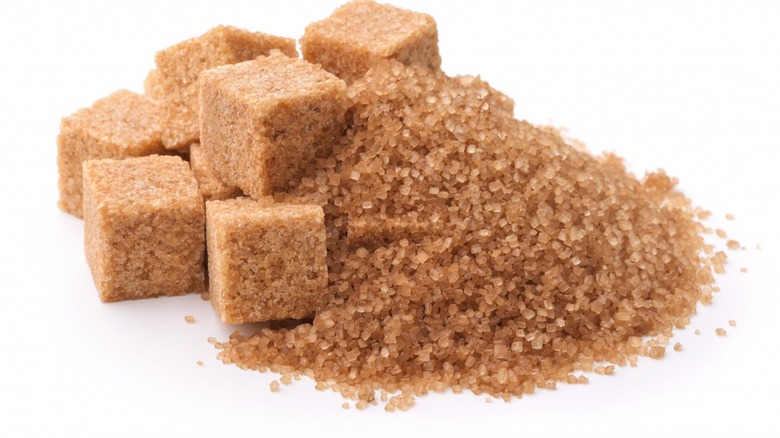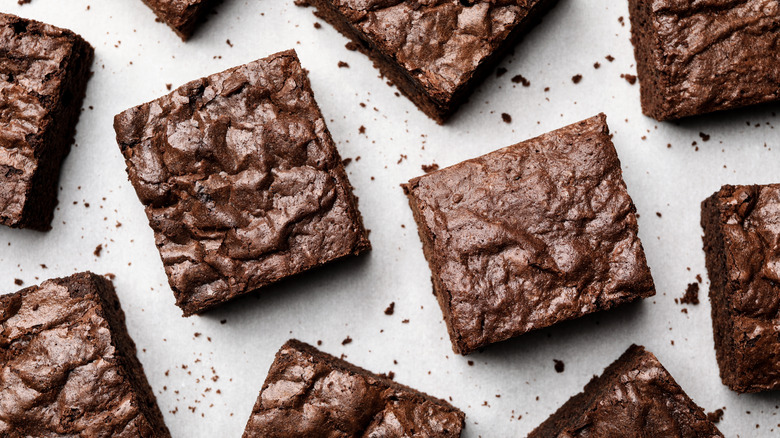Why You Should Use Dark Brown Sugar When Making Brownies
Whether you're team crispy edges or gooey middle, most people can agree that brownies are a delicious end to any meal. Served warm from the oven, brownies — fudgy or cakey, crackly on the top, or with chunks of chocolate and nuts speckled throughout — are only improved by a scoop of vanilla ice cream, melting to create a sauce surrounding the chocolate dessert.
Ina Garten's brownies were sold by the thousands each week at her Barefoot Contessa gourmet market, per Food Network. After all, although consumers have options galore for boxed brownie mixes at the supermarket, nothing compares to a homemade brownie. If you aren't fortunate enough to have a family recipe passed down, there are seemingly millions of brownie recipes found on the internet, thanks to Google. This means that home cooks have plenty of variations to try, experimenting until they can entice every family member.
Martha Stewart suggests a recipe with a higher flour content if you prefer cakey brownies. If a fudgy brownie is what you like, opt for a higher ratio of fat (chocolate and butter) to flour in your batter. Regardless of which type of brownie you prefer, sugar remains a relative constant. Though most recipes call for white granulated sugar, some bakers suggest using dark brown sugar to yield a superior brownie. Here's why.
Dark brown sugar adds a more complex flavor
According to The Kitchn, dark brown sugar will create a "chewier, fudgier" brownie compared to recipes using white granulated sugar or even light brown sugar. Brown sugar contains molasses, the syrupy byproduct of the sugar-making process, per The Spruce Eats. That complex molasses flavor (a little sweet and slightly bitter) also adds moisture and tenderness to brownies. When baked, molasses resembles caramel, imparting the dish with a gooey consistency.
If your recipe doesn't call for brown sugar, The Kitchn recommends swapping half or all of the sugar in the recipe for dark brown sugar. Since light brown sugar contains 3.5% molasses versus 6.5% in dark brown, says MasterClass, using dark brown sugar should give your brownies a deeper flavor that's almost toffee-like.
If your bag of dark brown sugar has gotten rock hard in the pantry, Food Network recommends placing the sugar in a microwave-safe bowl covered with a damp paper towel, heating briefly to soften. Don't have any dark brown sugar? You can make brown sugar from white sugar. Just combine two tablespoons of molasses per cup of granulated sugar in a food processor, then pulse until the sugar resembles brown sugar.
Prepared in a single bowl and ready in under an hour, brownies can be made any day of the week. Like any other recipe, begin with quality ingredients for the best results — and remember to share.

